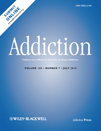THE LIMITS OF SCIENCE
Harold Kalant is correct to say that scientists are ill-positioned to make social judgements [1]. However, that criticism does not go far enough. They are also ill-positioned to make the necessary scientific judgements, for two reasons. First, there is a confounding of user populations and the harms of drugs. Secondly, the nature of drug harms changes over time.
As so often, alcohol provides a useful parallel because it is more familiar, more fully researched and less contentious. Younger males consume much more of their alcohol in the form of beer than do older females; the latter are more likely to consume wine or spirits. For young males, alcohol generates a great deal of violent crime; for older females, alcohol leads to adverse health and family consequences but little violence against weaker victims. Analysis might show that, on average, beer produces more violent crime per litre of ethanol, but one would hardly claim that beer was itself more criminogenic. That association with crime is simply a consequence of preferences among groups that differ in their propensity for certain kinds of acts. If young males preferred fortified wines, then fortified wines would appear to be more criminogenic.
Now consider cocaine powder and crack cocaine, two different forms of the same substance. Crack's association with violence and birth of drug-addicted infants drove fear of crack and the resulting differences in US sentence severity between powder cocaine and crack cocaine. There is nothing intrinsic about crack cocaine being the base, not the alkaloid, form of the molecule that made its retail markets so violent in the 1980s, or that made it any more harmful in utero.
Compared to powder cocaine, crack is used much more heavily by poor, African American males than by other groups, as indicated by analysis of emergency department and Medical Examiner admissions, the population in treatment and urinalysis and interviews of arrestees. Although each of these indicators has its own flaws, there is a great deal of consistency in them and there is little evidence of substantial white or Asian middle-class crack dependence or abuse. Perhaps the faster-acting crack is more criminogenic, but it is impossible with existing analyses to distinguish between differences in user populations and the drug itself.
The violence associated with crack has declined over time. In the mid-1980s crack was used primarily by the young in the United States. Now, because rates of initiation/escalation into frequent use have been lower for a long time, the population of users has aged. For example, comparing 2005 and 1992 treatment admissions for which smoked cocaine is the primary drug of abuse, the share over the age of 40 years rose from less than 10% in 1992 to more than 40% in 2005 [2]. Violence, even among crack users, is likely to be a young man's game. Studies of crack in 2005 will surely find much less violence associated with the drug than did the studies of 1985. Relationships between any specific drug and behaviors such as crime and violence are subject to change over the course of a drug epidemic [3].
Similar changes over time have occurred with cannabis and its harms. For example, a number of data sources suggest that cannabis is becoming more potent in some nations such as the Netherlands [4] and the United States [5], perhaps in response to increased enforcement activity ([6], chapter 3). There is also evidence of rapid increases in treatment seeking by marijuana users in the same countries [2,7]. That may be driven by the rising potency [higher tetrahydrocannabinol (THC)] but also reflecting other factors as well, such as declining cannabidol and the increased awareness of the potential for cannabis use to trigger psychosis [6]. Judgements about the relative harm of cannabis based on earlier studies are likely to understate the adverse effects of more potent cannabis. Moreover, the ways in which cannabis is consumed change for reasons that are not understood. Whereas in Europe it is usually consumed with tobacco, in the United States it is consumed mostly on its own. These may have different harms associated with them. The unpredictable changes in modes of cannabis-taking complicate statements about the relative harms of the drug in aggregate for any society.
Kalant asks whether these harm indicators serve a useful purpose. Given their inherent frailty, that is a troubling question indeed.
Declaration of interest
None.




